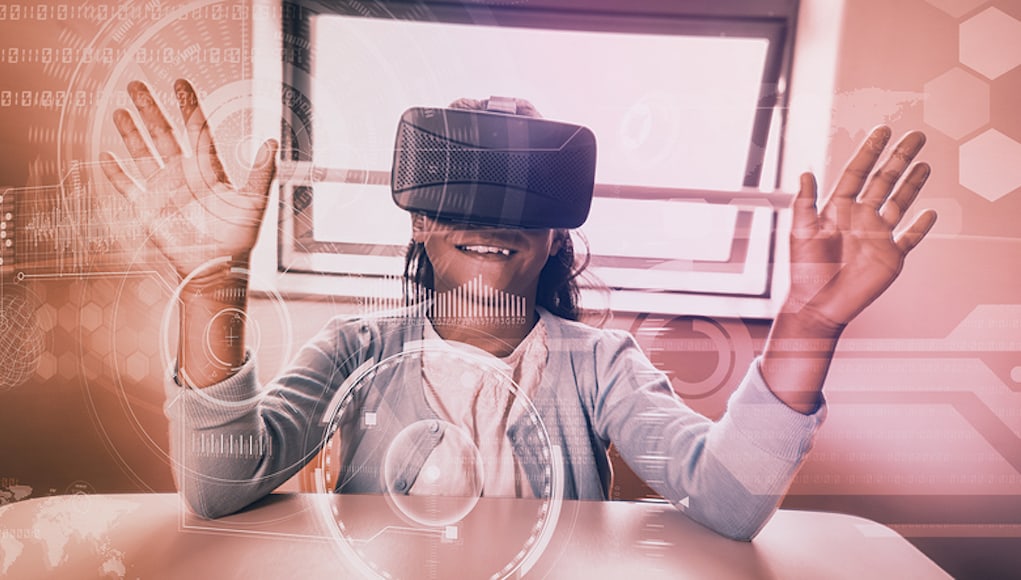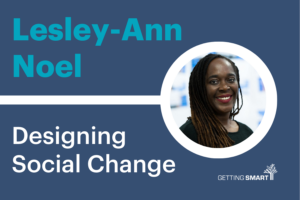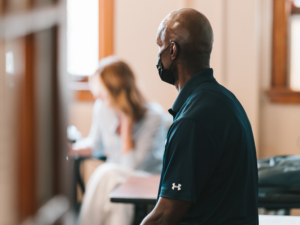What if Holocaust Survivors Could Teach Your Class?

What if Nelson Mandela could give your students a lesson in diplomacy? What if Jay-Z could teach your students how to build an $810 million musical empire? What if Holocaust survivors could teach your class?
Holocaust survivors are teaching classes, right now to hundreds of students, but that could change to thousands, possibly even millions in the years to come. In holographic telepresence form, these survivors are sharing their stories with eager students at the Illinois Holocaust Museum & Education Center. Three-dimensional holographic representations of the survivors sit on stage, awaiting their audience to ask them questions. With lifelike imaging and audio tracking, they respond personally to each individual question asked. This transformative Take a Stand exhibition provides an immersive experience like no other, where “the narrator never dies.”
Thirteen survivors initially answered thousands of questions regarding their life stories in order for developers to personalize their holography. By doing so, practically any question asked by visitors can be answered by the survivor’s holographic representation, giving the exhibition a truly immersive and human-like feel. In commemorating the memory of such historical truths, The Illinois Holocaust Museum in partnering with the Shoah Foundation, have reinvented the power of legacy as this pioneering technology enables story sharing for the future. The survivors are no longer survivors of war, they are teachers of survival. This future-forward approach is an example of the massive potential interactive technology possesses for the classroom.
“This is the most impactful project I’ve been a part of,” states David Poyner, Lead Developer for the Interactive Activism Modules. In assisting on the audio/visual integrator for the early stages of the Survivor theater, David says, “Reading from a book or learning from a screen is limiting in appealing to the senses. The audio recognition and depth representation is extremely important in giving a sense of reality to the communication between visitor and survivor.” David also notes that the response from young audiences have been truly rewarding and shows the emotional impact this type of engagement evokes from viewers. “This technology is an important step towards true experiential learning,” David states.
Due to Cisco’s live telepresence, we now know that we have the potential to capture stories, thoughts and feelings, in real-time as well. A world in which we can “beam” people from one side of the earth to another for a quick meeting, presentation or lecture is already here. And with their uncanny likeness, full-motion range and real-time audio, holograms like those created by Take a Stand already rival the physical engagement present in global telecommunications. A survey of human resources decision makers by Right Management even suggests that “holographic telepresence meetings would be one of the most prominent changes in the workplace by 2018.” No need to apply for that traveling job when you can travel without moving.
So what does this mean for the future of the classroom? Educationists have caught on to the potential of holographic telepresence in the classroom and are already anticipating how this could revolutionize the ways schools school. Kelley Walsh and Paul Taylor predict that as holograms become more commonplace it could “bring a previously unimagined level of engagement and excitement to the learning process and attract students and encourage further studies.” They envision 7 ways holographic technology will make learning more fun in our future. Students could math with mathematicians, dance with dancers, and code with coders.
This is actually happening right now. Russian-based company HoloGroup is revolutionizing mixed reality educational applications in their HoloLens project. Does the technology they’re working on really have “the potential to shift the entire paradigm of education” as HoloGroup Alexey Yakubov, CEO and founder suggests? Decide for yourself.
HoloGroup explains that by “using holograms you can literally feel knowledge. It is much easier to understand the connection between atoms, complex work of human organs, to explain physical and chemical phenomena in three-dimensional space. At the moment there is no technology that can be compared with Mixed Reality in terms of submission of information.”
As an educator, I see endless possibilities for the future of educational development. A future where a long-standing equity gap has the potential of being filled. A future where geographically marginalized classrooms could engage with learning like their more privileged counterparts. A future where distant scholars need no transport to teach some of the world’s greatest lessons. And who needs a classroom anyway? Holograms for homeschooling could provide as powerful an experience.
While the potential to truly educate all may lie in the future of holographic telepresence, it may take some time for this technology to become affordable for the masses. The multi-million dollar Take a Stand project isn’t the ideal cost for everyday adoption and use. Regardless, HoloGroup intends to make these technologies universally accessible; there are programmers working on this very technology as you read these words, and like with most technological innovations, as holograms advance, they will inevitably become cheaper over time.
Holograms will be in our future, and will be in our future classrooms. Imagine the possibilities if we could hologram the best content drivers in every industry as our teachers. The medical profession, construction industry, development sector, global education and more will be empowered by this exceptionally innovative tool. Virtual or augmented reality, including the use of holograms, has the ability to heighten the way humans perceive their surroundings and also augment their ability to understand and manipulate the world around them. New education methods and techniques will help us use these tools to better elevate the way we learn, the way we work and the way we live.
Will our own inventions outsource us as teachers? Potentially. Why would I teach a lesson on linguistics when, let’s say, I could beam Noam Chomsky in for a lecture? Why would I teach a lesson on the Holocaust when a survivor could share their story? The future is right in front of us. It is only a matter of time.
For more, see:
- Personalized PBL and Virtual Reality Bring History to Life
- 3 Ideas for Using Virtual Reality with Place-Based Ed
- How Virtual Reality and Embodied Learning Could Disrupt Education
Stay in-the-know with all things EdTech and innovations in learning by signing up to receive the weekly Smart Update.






0 Comments
Leave a Comment
Your email address will not be published. All fields are required.